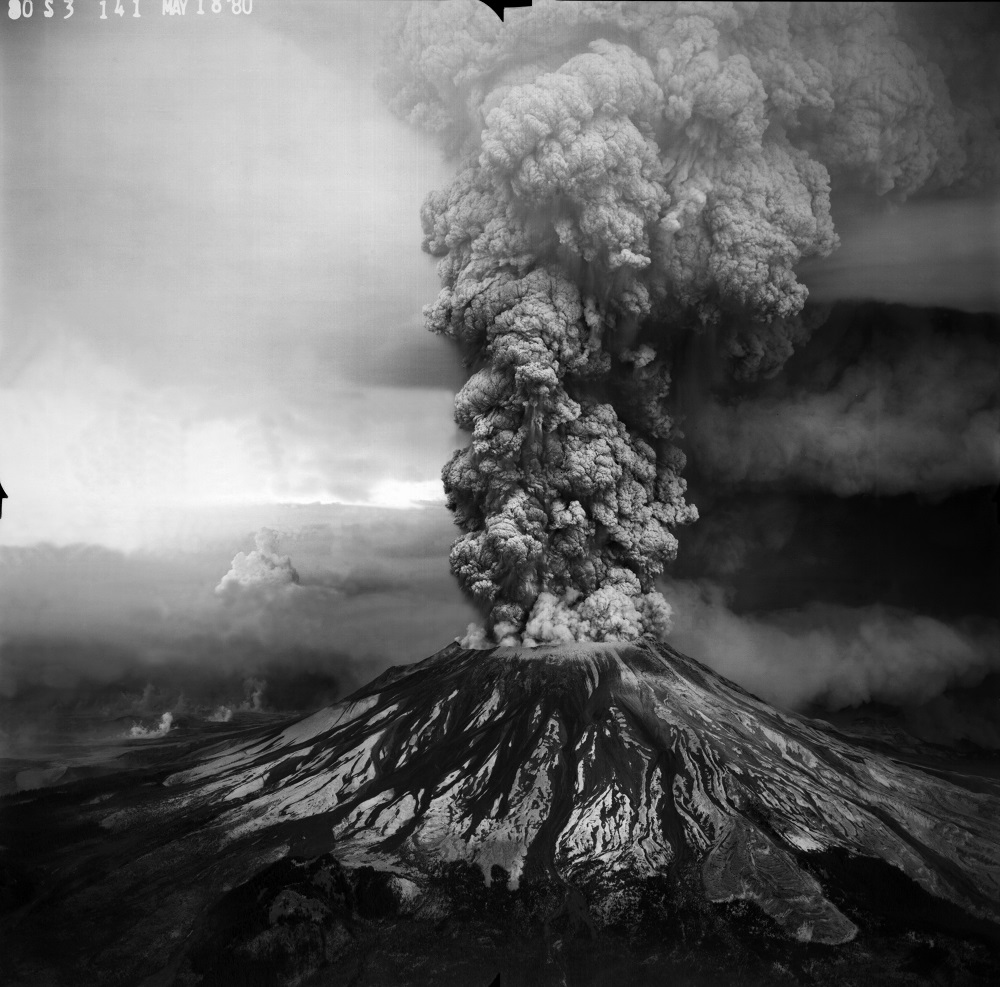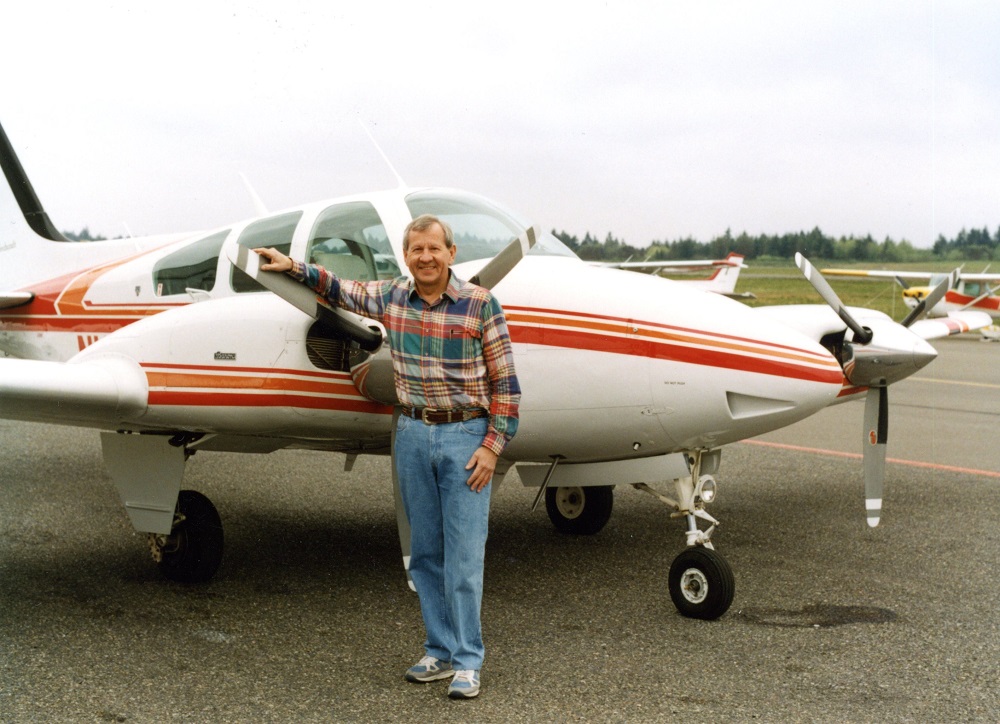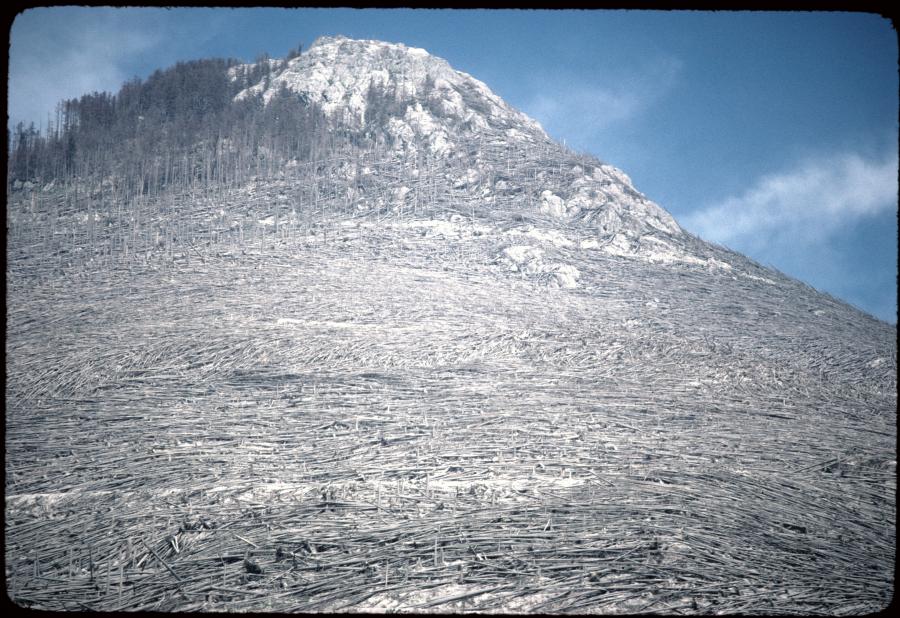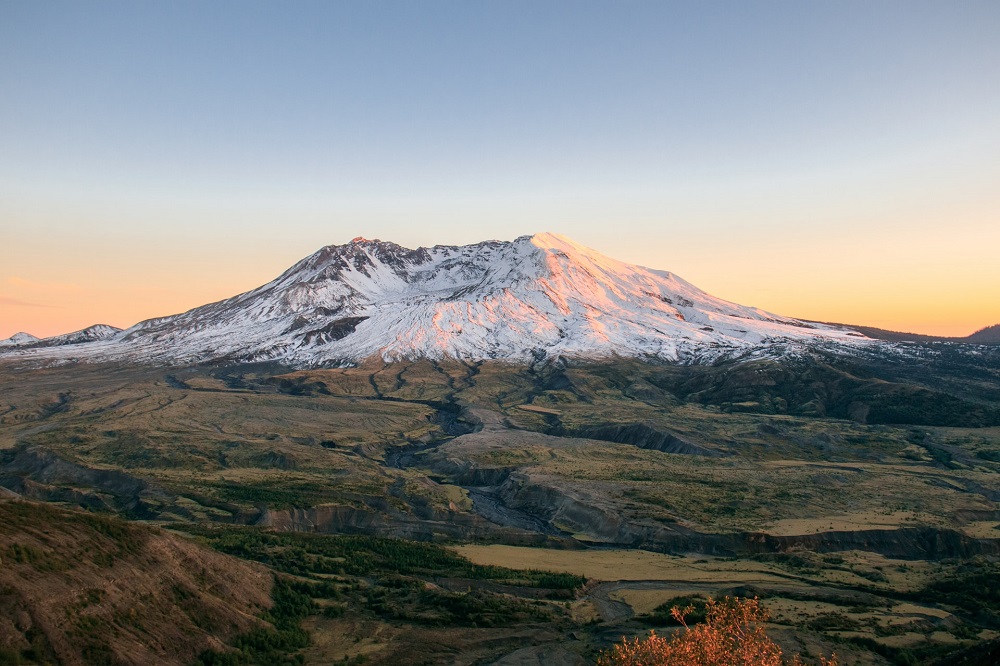Memories of an aerial search mission on Mount St. Helens the day after it erupted
Charlie Hogan (BA 1959) remembers the acrid smell of ash like it was yesterday.
But it was 40 years ago that Mount St. Helens erupted, uncorking 24 megatons of thermal energy that triggered the largest landslide ever recorded and launched an 80,000-foot plume of super-heated smoke, dust and debris that blanketed the region and encircled the globe.
And it was 40 years ago tomorrow that Hogan got a close-up look at the devastation.
In 1980, he was well into a successful career developing commercial real estate and retail shopping centers around the Puget Sound. He also was—and still is—an avid airplane pilot with a penchant for adventure.
At the time, Hogan owned a Beechcraft Bonanza. To help cover expenses, he leased the single-engine six-seater to the Civil Air Patrol on-demand for mountain searches and other uses.
The morning after the eruption, at around 6 o’clock, Hogan’s phone rang. It was the CAP’s liaison officer with an urgent request for a lift down to Toledo, Washington, where he would join an Army search-and-rescue mission around the mountain’s decimated northern slopes.
The officer asked if Hogan would like to accompany him on one of the helicopters.
He didn’t need even a moment to contemplate: “Count me in!”
Fly me to the moon
Making the short flight from Tacoma Narrows Airport, Hogan landed the Bonanza gingerly on the ashen airstrip in Toledo, on the Cowlitz River just 30 miles northeast of the scarred and still smoking volcano. After a mission briefing, he and the liaison officer boarded a helicopter with a team of Army soldiers and medics to scour the tangle of remote forest roads that circle the mountain in search of stranded vehicles or people—dead or alive.
“The mission was to take photos of any cars, license plates or registration we could find, and mark with a big red X,” Hogan says. “We had body bags in case we found human remains.”
What he saw from the sky was unforgettable. The blast zone was a massive swath of scorched earth that fanned out for 220 square miles from northern slopes of the mountain.
“I have never seen destruction like this,” Hogan says. “All of the trees were leveled, as if a hurricane had blasted through them. And everything was covered in white-gray ash. It looked like an atomic bomb had hit. It was unbelievable.”
The once pristine Spirit Lake, just northwest of the blast, was choked with dusty embers and mud and a riot of downed kindling. “It was hardly even distinguishable as a lake,” Hogan says.
The view from the ground was no less sobering.
The crew landed four times on this pyroclastic moonscape. Each time, the pilot kept the rotors spinning to prevent ash from clogging the engine. The medics donned hazmat suits and oxygen masks to venture outside and investigate.
On the day, they found two demolished cars. No bodies.
New perspective
Flying home from Toledo later that afternoon, Hogan couldn’t help feeling extraordinarily fortunate.
The geologic wreckage took 57 lives directly, obliterated flora and fauna, and wrought damage in the billions of dollars.
But the toll could have been much worse, if not for a lucky turn of the weather. May 18, 1980, was an unseasonably warm and clear day in the Pacific Northwest. Prevailing winds out of the west ushered the massive cloud of ash away from the millions of people—including Hogan and his family—living in cities clustered around the Puget Sound to the northeast (though it darkened skies over Eastern Washington and scattered dust over a quarter of the nation).
Today, when Hogan flies the I-5 corridor past Mount St. Helens, he marvels at the life that has returned below its two-mile crater—where four decades ago he found only death and destruction.
A licensed pilot since he was a teenager in the 1950s, he has a lifetime of great stories from unforgettable flights in the eclectic squadron of airplanes he has owned over the years—practical Cessnas, Beechcrafts and Pipers, seaplanes, business jets, classic military trainers, even an open-cockpit aerobatic Waco biplane.
But his unexpected mission to Mount St. Helens on the day after it blew its top lives in a category by itself.
“I’ve had a lot of great memories in aviation,” Hogan says. “But this was certainly the most adventurous. It’s not every day you get to fly into country that’s been devastated by a volcanic eruption. Getting to see that was the chance of a lifetime.”





